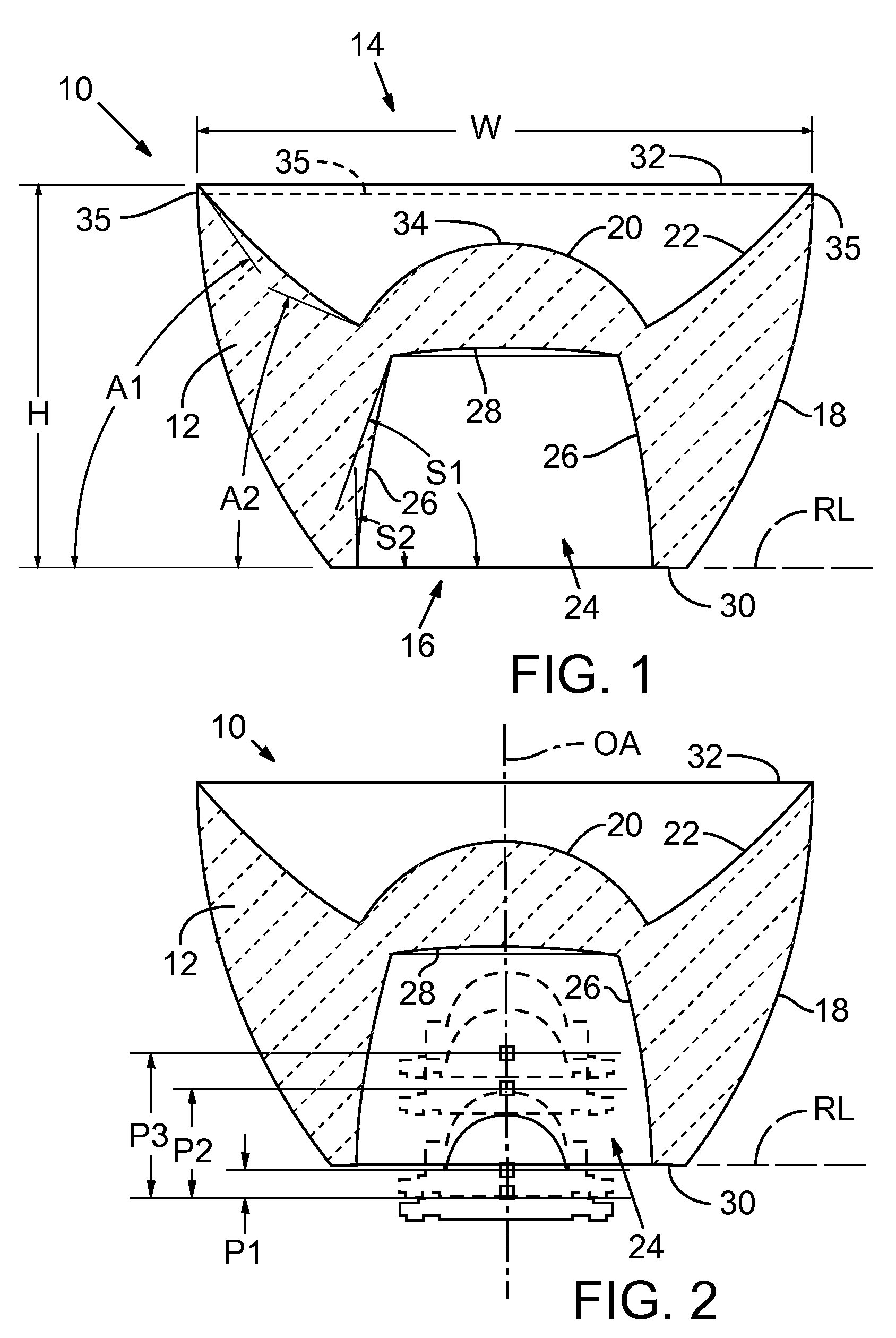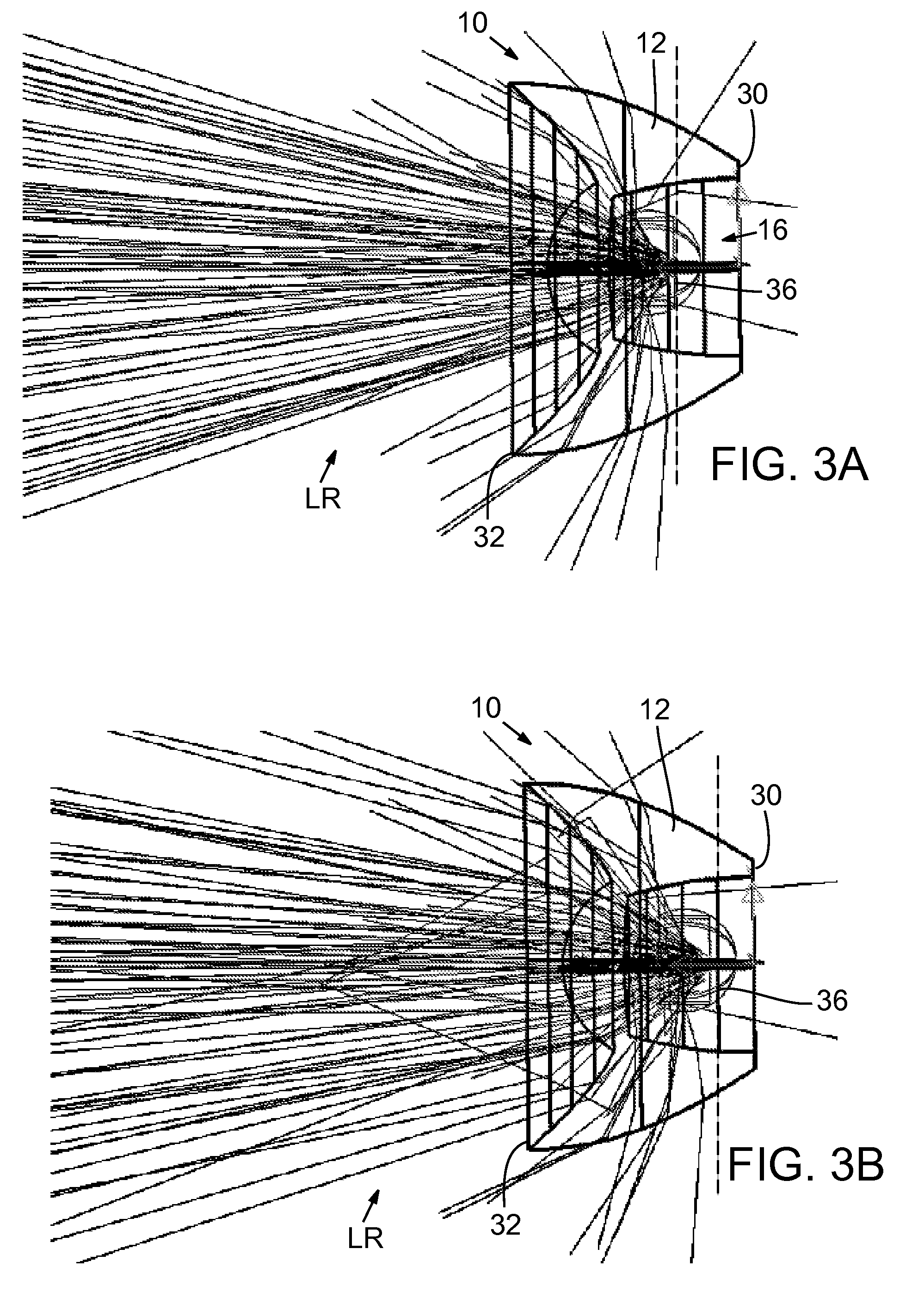Focusing lens system
a technology of focusing lens and lens body, which is applied in the field of lenses, can solve the problems of limited capacity of prior art lenses
- Summary
- Abstract
- Description
- Claims
- Application Information
AI Technical Summary
Benefits of technology
Problems solved by technology
Method used
Image
Examples
Embodiment Construction
[0022]FIG. 1 shows a lens 10 for focusing light. Lens 10 may include a lens body 12 with a front face 14, a rear void, such as well 16, and a side surface 18 that extends between front face 14 and rear well 16. Front face 14 includes a central surface 20 surrounded by an annular surface 22 that may define in cross-section a concave curve. Rear well 16 defines a space 24 within which an LED or other light source may be adjusted in position (FIGS. 2, 3, and 5).
[0023]Well 16 is typically defined by a sidewall 26 and a base 28. Sidewall 26 preferably defines in cross-section, as shown in FIG. 1, a concave curve. Base 28 typically defines in cross-section a concave curve. Rear well 16 may include a rear rim 30, which as shown in FIG. 1, may be understood to define a reference line RL.
[0024]The shape of the concave curves in the base and sidewall may be any shape suitable for manufacture and use. The curve of sidewall 26 is typically a Bezier curve. A preferred Bezier curve for the sidewa...
PUM
 Login to View More
Login to View More Abstract
Description
Claims
Application Information
 Login to View More
Login to View More - R&D
- Intellectual Property
- Life Sciences
- Materials
- Tech Scout
- Unparalleled Data Quality
- Higher Quality Content
- 60% Fewer Hallucinations
Browse by: Latest US Patents, China's latest patents, Technical Efficacy Thesaurus, Application Domain, Technology Topic, Popular Technical Reports.
© 2025 PatSnap. All rights reserved.Legal|Privacy policy|Modern Slavery Act Transparency Statement|Sitemap|About US| Contact US: help@patsnap.com



